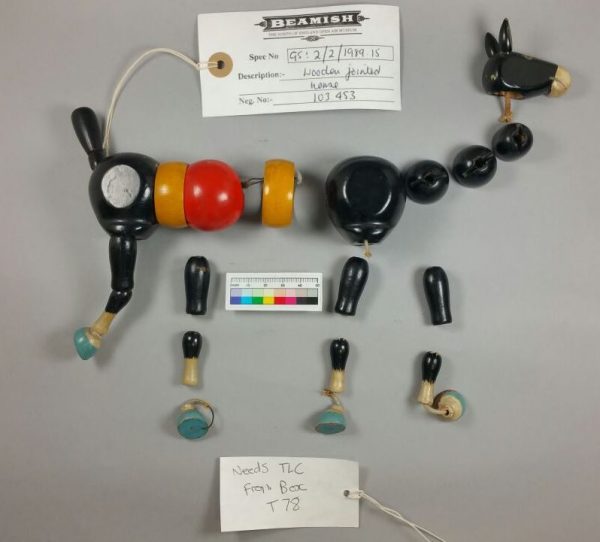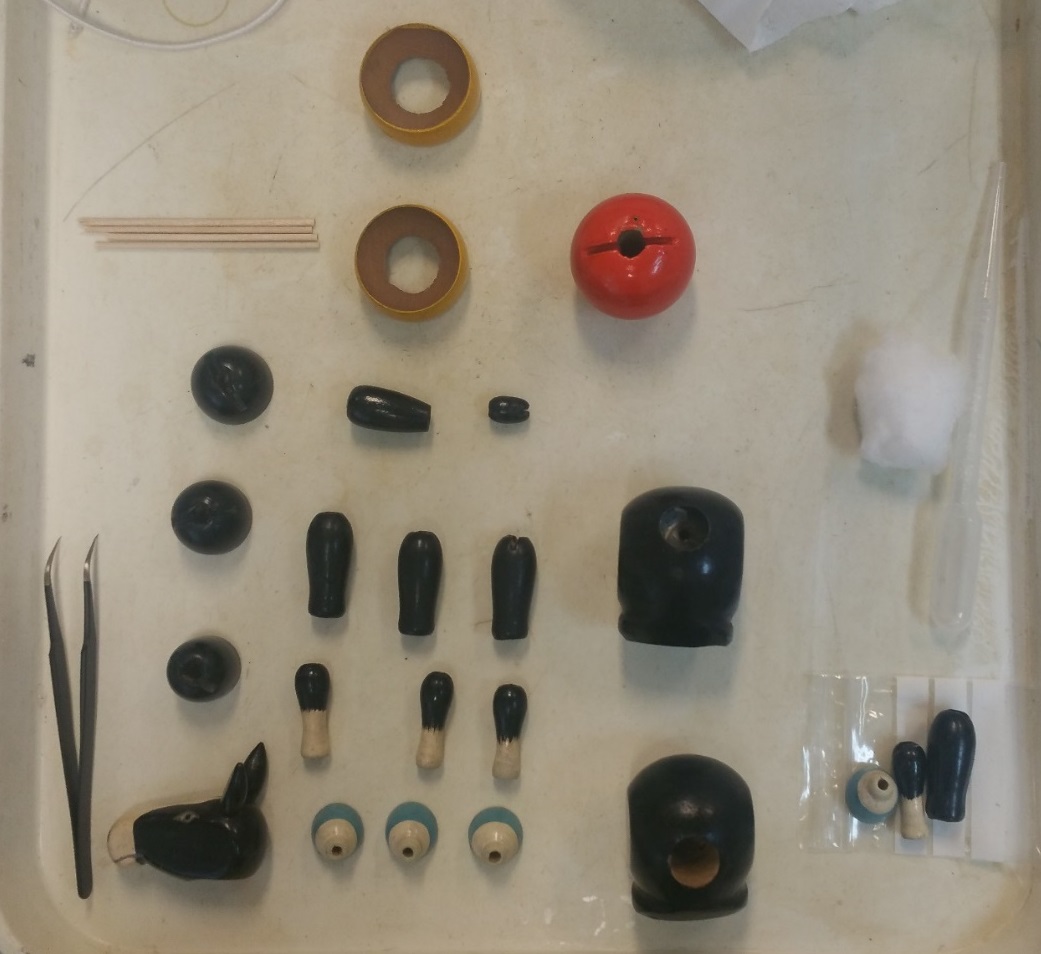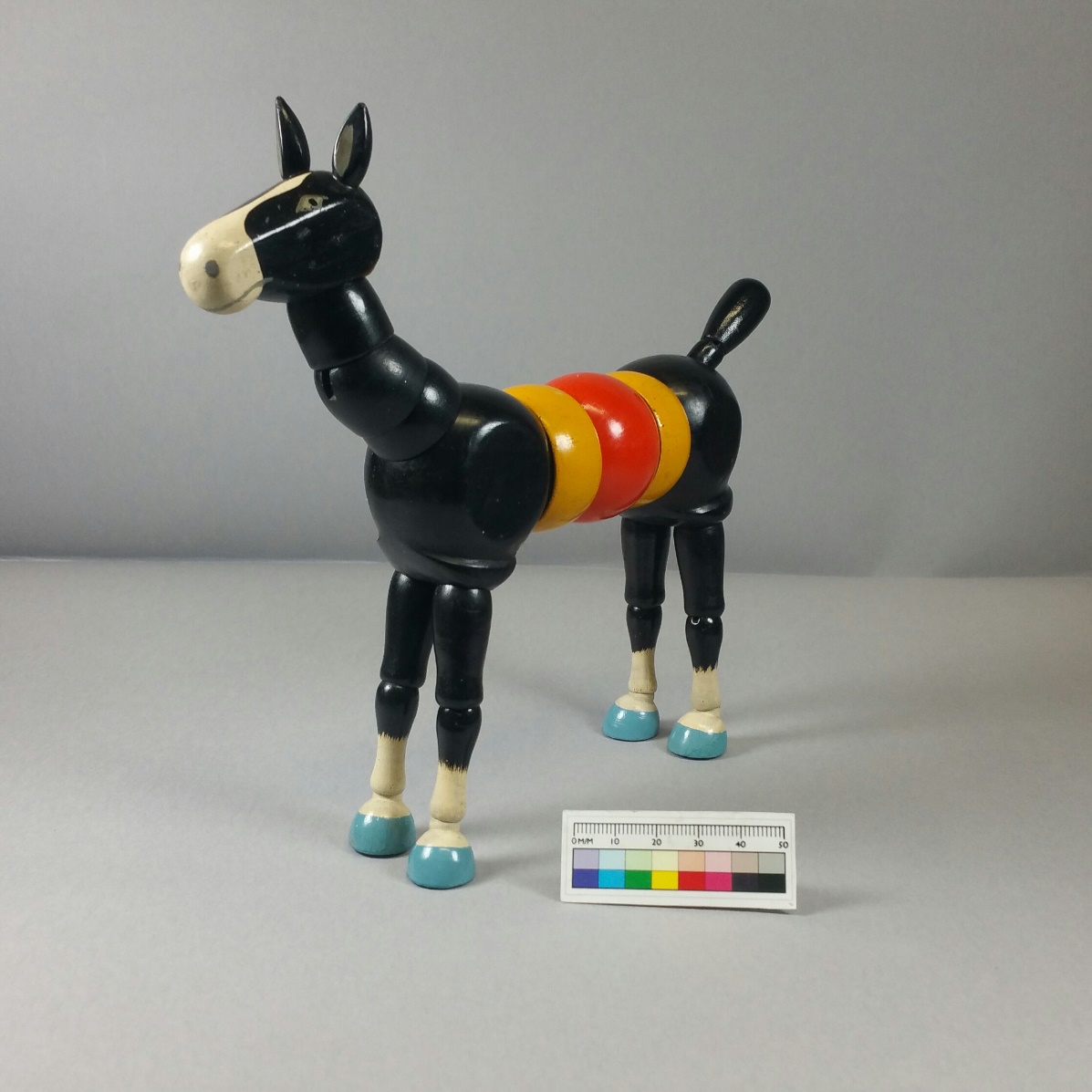Unfortunate Ingredients (Wooden Toy Horse) – Student Post

During this season’s summer practical work, I have been working on a wooden horse toy provided for conservation by Beamish Museum. The innocent plaything has seen better days: the jointed body once held together by elastic lay in pieces within the bag complete with a handy note informing the reader that the toy needed some ‘TLC’. The value had been placed in its function, and the curatorial team requested that the object be restored to working order. A simple repair job? Through pre-treatment analysis, a very different story began to unfold.
The paint layer on all components but the hooves was in good condition and had only suffered some soiling from use and some losses from the rubbing of the joints during play. The secret to the object’s original mechanism lay within the wooden body, visible through the openings of the components but frustratingly difficult to clearly access. As a fairly routine procedure, the most intact section and two other selected components were x-rayed to reveal how the toy had been originally threaded.

A successful plate exposure! The internal cavities of the toy are clearly visible, complete with some surviving lengths of elastic showing how it was threaded and how it should be repaired. A sketch was taken, and decisions about the conservation procedure began to take shape. However, whilst attention was being paid to the threading and the bands of density variation that showed the machine tooling, a third, quite interesting feature caught the eye.

Edges of such crisp luminance belied a hidden ingredient: lead. Lead oxides had been used to colour the yellow components of the horse’s jointed body; XRF analysis confirmed this. Lead had been used in the yellow paint, and Cadmium-Selenium was present in the red pigments. This was a slight issue as the object was intended to be handled as part of a teaching collection, showing how toys in the past looked and felt to play with. As these materials are potentially toxic, they needed to be made as safe as possible so the object could be looked at and handled.

I began by dismantling the toy, dry cleaning and then wet cleaning every component. Once this had been done thoroughly, the solubility of the paint was gently tested on a discreet area. As the paint seemed vulnerable in ethanol and acetone, a water-based consolidant was the only possible option. An acrylic colloidal dispersion in deionised water was tested and confirmed to be successful, and two layers were applied to every component, with a third applied to the hazardous pigments. Once the original surface was safe, work could be done to fill losses with acrylic paints and start to restore the toy to functionality. After that, it was just a case of turning the dismantled fragments of the toy horse, back into a functional wooden toy horse.
With that, what was only recently a bag of twenty-three wooden pieces has been restored to a functional object ready to teach visiting groups at Beamish about toys from the past, much more valuable to a curator than before. Coupled with a bit of the aforementioned TLC, hopefully it’ll be a long time before this horse needs restringing again.
Chris.
